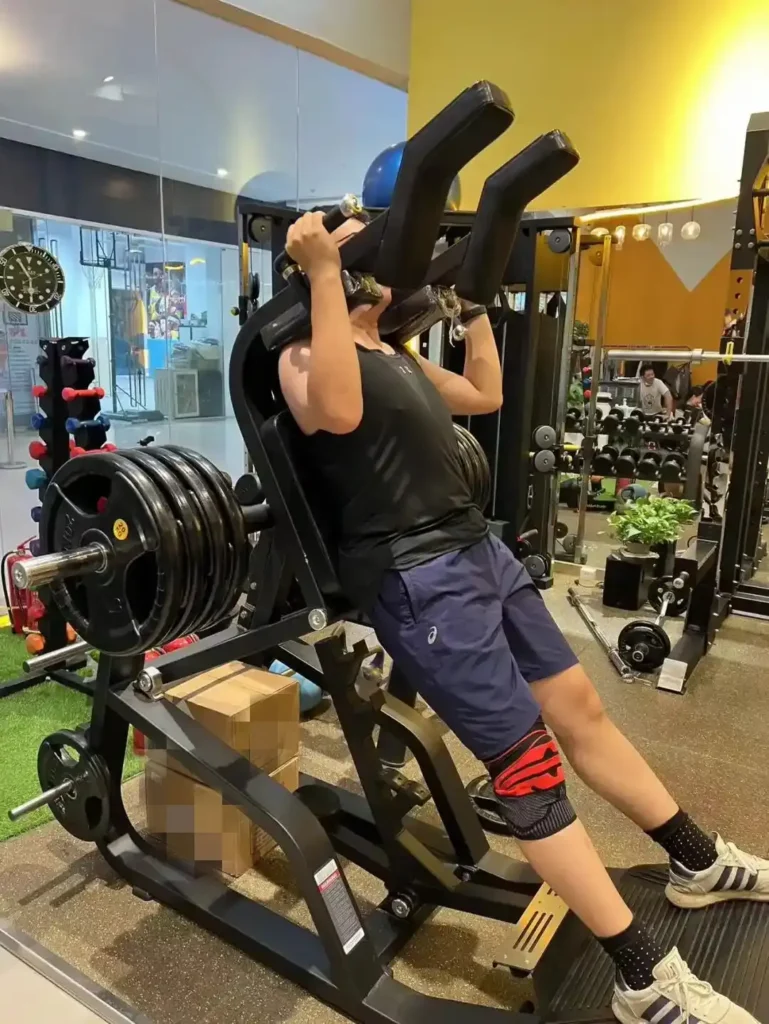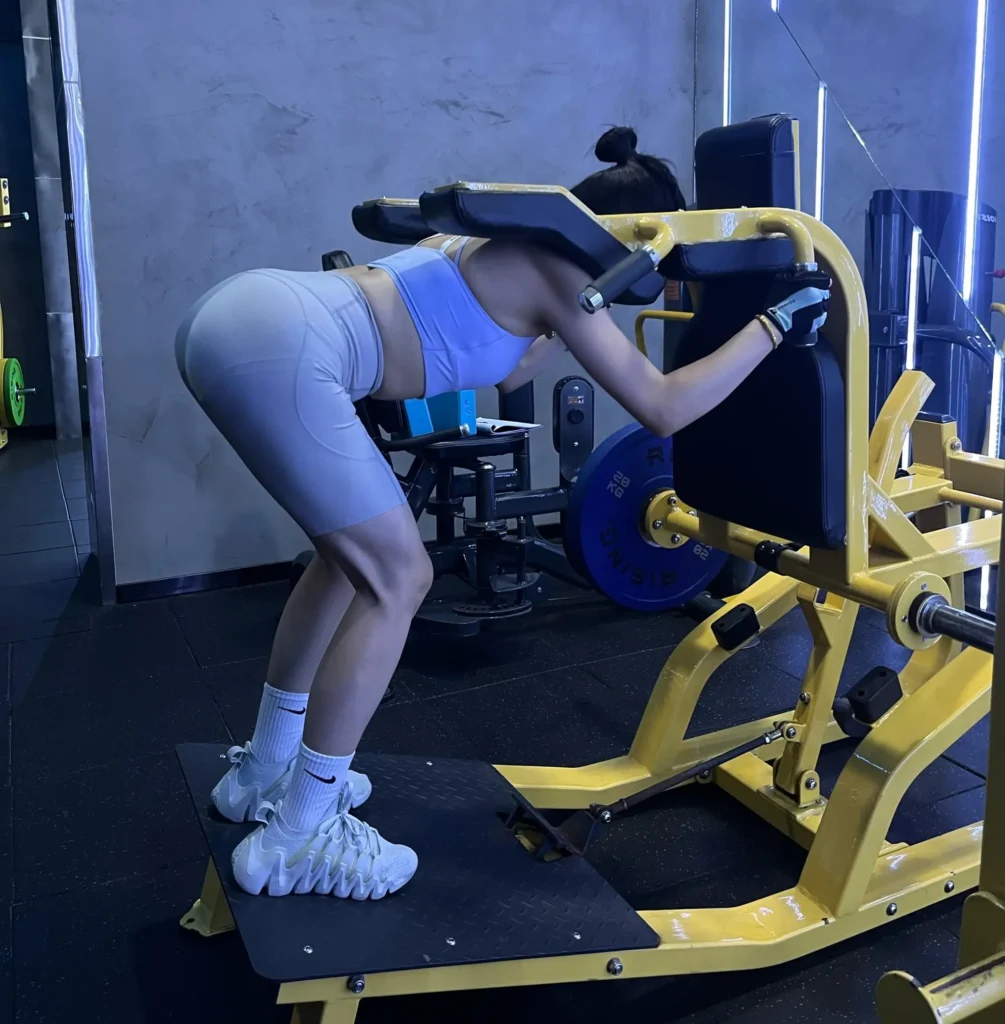9 Essential Tips for Effective Hack Squats
Hack squats are a very common leg exercise in the gym, which can effectively exercise the quadriceps, as well as simultaneously stimulate the glutes, hamstrings, and calf muscles. However, many people cannot fully exert the training effect of hack squats due to incorrect posture or improper technique, and may even cause injuries.
This article will introduce to you in detail 9 basic tips for effective hack squats, from basic to advanced, to help you maximize the exercise of leg muscles under the premise of ensuring safety.

Basic Skills
1.Correct Posture and Foot Position
- When standing, feet should be shoulder-width apart, with toes slightly turned outward, which can help you better activate the gluteal muscles while maintaining body stability.
- On the hack squat machine, ensure your back is close to the pad, shoulders are under the shoulder pads, and your body maintains a natural physiological curvature. The position of your feet on the pedal is also crucial. Generally, the soles of your feet should be placed in the middle to lower part of the pedal, which can better stimulate the quadriceps; if you place the soles of your feet in a higher position on the pedal, it can activate the glutes more.
2.Appropriate Weight Selection
- Beginners are advised to start with lighter weights and gradually increase the weight after becoming familiar with the movement. The selected weight should allow you to complete 8-12 standard movements while maintaining the correct posture. If you cannot complete this range of repetitions, or if your body sways and cannot maintain stability during the movement, it means the weight is too heavy.
- With the improvement of training level, you can adopt a progressive loading method, that is, appropriately increase the weight by 5%-10% on the basis of the previous weight in each training session, to continuously stimulate muscle growth and strength improvement.
3.Correct Breathing Method
- During the squatting process, slowly inhale, allowing the abdomen to naturally bulge, which can increase intra-abdominal pressure and provide better support for the spine, protecting the lumbar vertebrae.
- When rising, exhale forcefully, just like your instinctive reaction when pushing heavy objects, which can help you exert force better and also reduce pressure on the waist.
Intermediate Skills
1.Control the Speed and Trajectory of the Movement
- When squatting, slowly and controllably bend your knees, keep your back straight, and avoid leaning forward or backward. Generally, the squatting process should be controlled within 3-4 seconds, which can fully stretch the leg muscles, increase muscle tension time, and thus better stimulate muscle growth.
- When rising, quickly but not abruptly push off your legs, avoiding completing the movement with inertia. Generally, the rising process should be completed within 1-2 seconds, while ensuring that the knees do not fully lock to prevent joint injury.
- In terms of movement trajectory, always keep the knees in the same direction as the toes to avoid the knees turning inward or outward, which can not only reduce the risk of knee joint injury but also allow the target muscles to be more effectively exercised.

2.Adjust Foot Position and Body Angle
- In addition to the common standing posture with feet shoulder-width apart, you can also try different foot position changes. For example, slightly narrowing the feet can exercise the inner quadriceps more; appropriately widening the feet can better stimulate the glutes and hamstrings.
- On the hack squat machine, the body angle can also be appropriately adjusted. Generally, the machine’s angle can be adjusted between 45 and 90 degrees. The larger the angle, the more vertical the body is, the more obvious the stimulation of the quadriceps; the smaller the angle, the more inclined the body is, the better the exercise effect on the glutes and hamstrings.
3.Increase Training Intensity and Difficulty
- When you have mastered the standard hack squat movement and can easily complete multiple sets of high-quality training, you can try to increase the training intensity. For example, at the end of each set of training, perform a few static contractions, that is, stay in the rising phase for 3-5 seconds, keeping the muscles in a continuous state of tension, which can further increase muscle fatigue and promote muscle growth.
- In addition, you can also use the descending set training method, that is, first complete a set of 8-10 standard movements with heavier weight, then immediately reduce the weight without resting, and complete another set of 12-15 movements, and finally reduce the weight once more to complete a set of 15-20 movements. This training method can effectively improve muscle endurance and strength, and increase muscle pump sensation.
Advanced Skills
1.Combine Explosive Power Training
- In the rising phase of the hack squat, you can try to exert force quickly, allowing the body to generate explosive power in a short period of time. For example, when rising, forcefully push off your legs, causing both feet to briefly leave the pedal, and then slowly squat back to the starting position. This kind of explosive power training can improve the muscle’s ability to contract quickly, enhance the explosive power of the leg muscles, and is very helpful for improving sports performance and competitive ability.
- When performing explosive power training, pay attention to safety, and it is best to do it under the guidance of an experienced coach. At the same time, ensure the standardization of the movement to avoid injury due to excessive force.
2.Try Single-Leg Hack Squats
- Single-leg hack squats are a more challenging training method, which can better exercise the independent control ability and strength of leg muscles, and also improve the body’s balance and coordination ability. When performing single-leg hack squats, stand with one foot in front of the other on the pedal, with the front foot bearing the main force, and the back foot playing an auxiliary support and balance role.
- During the movement, maintain body stability and avoid swaying or tilting. When squatting, try to keep the front knee vertical to the toes to avoid the knee going over the toes or turning inward. When rising, rely on the strength of the front leg to push the body back to the starting position. Single-leg hack squats can be used as an auxiliary exercise to regular hack squats, performed 1-2 times a week, 8-12 times per set, alternating between left and right legs.
3.Develop a Personalized Training Plan
- Develop a reasonable hack squat training plan according to your fitness goals and training level. If your goal is to build muscle, you can adopt a medium-weight, multi-set training method, such as 3-4 sets, 8-12 times per set, with a rest period of 60-90 seconds between sets; if it is to improve strength, you can adopt a heavy-weight, few-set training method, such as 4-6 sets, 3-5 times per set, with a rest period of 2-3 minutes between sets.
- The training plan should have a certain degree of flexibility, and adjust the intensity, number of sets, and repetitions of training in a timely manner according to your physical condition and training response. For example, if you feel overly fatigued or show slight signs of injury during training, you can appropriately reduce the training intensity or rest for a few days; if progress stagnates, you can try to change the training method or increase the diversity of training to break through the plateau.

In conclusion, hack squats are a very effective leg exercise, but to fully exert their effect, you must master the correct skills and methods.
By gradually mastering these 9 basic skills from basic to advanced, and developing a reasonable training plan, both beginners and experienced fitness enthusiasts can effectively exercise leg muscles and improve strength and explosive power under the premise of ensuring safety.


